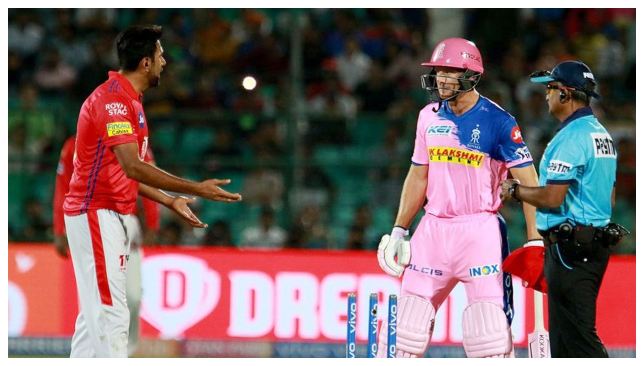
The International Cricket Council (ICC) changed the Super Over rule this week, scrapping the boundary count-back rule.
Hereon, if the teams were to score the same number of runs in their Super Overs, the Super Over will be repeated until one team wins outright. A statement from the ICC said that the change is “in keeping with the basic principle of scoring more runs than the opponent to win.”
Here are five other rules that the ICC could consider modifying to maintain balance between bat and ball.
Scrapping Leg Byes & Byes in T20Is
T20 is a format that heavily favours the batsman. With short boundaries, flat pitches and field restrictions there is very little going for the bowlers. So in the case of a batsman being completely beaten by a bowler or is struck on the body after failing to make contact with the bat, he could be allowed to crossover without taking the run into account.
That way the bowler doesn’t feel hard done by when he gets the better of the batsman with a legitimate delivery. In the shortest format alone, only wides and no-balls could be considered as extras.
Allowing umpires to oversee ‘Mankading’

Every time a bowler removes the bails at the non-striker’s end without delivering the ball to catch the runner out of his crease, the spirit of cricket seemingly takes a beating. Ravichandran Ashwin was admonished in IPL 2019, for mankading Jos Buttler when he was actually well within his rights as per the rules.
Not everyone is as courteous as Courtney Walsh who refused to remove the bails in his delivery stride to dismiss Pakistan’s No11 batsman Saleem Jaffar in a group game at the 1987 World Cup. Windies ended up losing the match by one wicket.
Officials on and off the field can be employed to issue warnings to players who step out of the crease at the non-striker’s end before the bowler delivers. That way the decision is with the umpire to rule a batsman out after a warning and fielding teams needn’t worry about their moral compass going askew.
No toss in Tests

The playing surfaces in Test matches are largely prepared to suit the strengths of the host nation. From Australia’s bouncy pitches to the dust bowls in the subcontinent, every home team ensures that their bowlers have an edge going into the game.
This could be nullified by doing away with the toss and allowing the visiting team to choose. Away sides struggle to win in places like India, England, Australia and New Zealand and by giving them the option, it could help make for more of an even contest.
The ICC did consider making this move in 2017 but they didn’t go through with it, as they reasoned that it would mean abolishing one of the integral aspects of Test cricket since it began in 1877 and that Tests would be robbed of the drama that surrounds a toss.
No runs off a Freehit if batsman is out
If a bowler were to deliver a no-ball, the batsman gets a free pass off the next delivery and can be dismissed only through a run out. While the bowler cannot get the batsman out in a freehit, the batsman is allowed to steal runs even if he is caught or bowled off the delivery.
The rule can be tweaked in such a way that, though the batsman cannot be declared out off a freehit, any runs taken off the delivery should be considered invalid if he were to be caught by a fielder or bowled.
Overthrow ricochets

While one rule that prevented the Kiwis from winning the World Cup final has been changed, there is another that needs to be looked at. During the 50th over of the England innings in the 2019 World Cup final, a throw from the deep ricocheted off Ben Stokes’ bat and rolled away to the boundary.
England were awarded six runs which changed the complexion of the match that ended in a tie. While it isn’t deliberate to be ruled as obstruction, the ball can be declared dead once it hits the part of the bat or the batsman and any run taken after that should be deemed invalid.